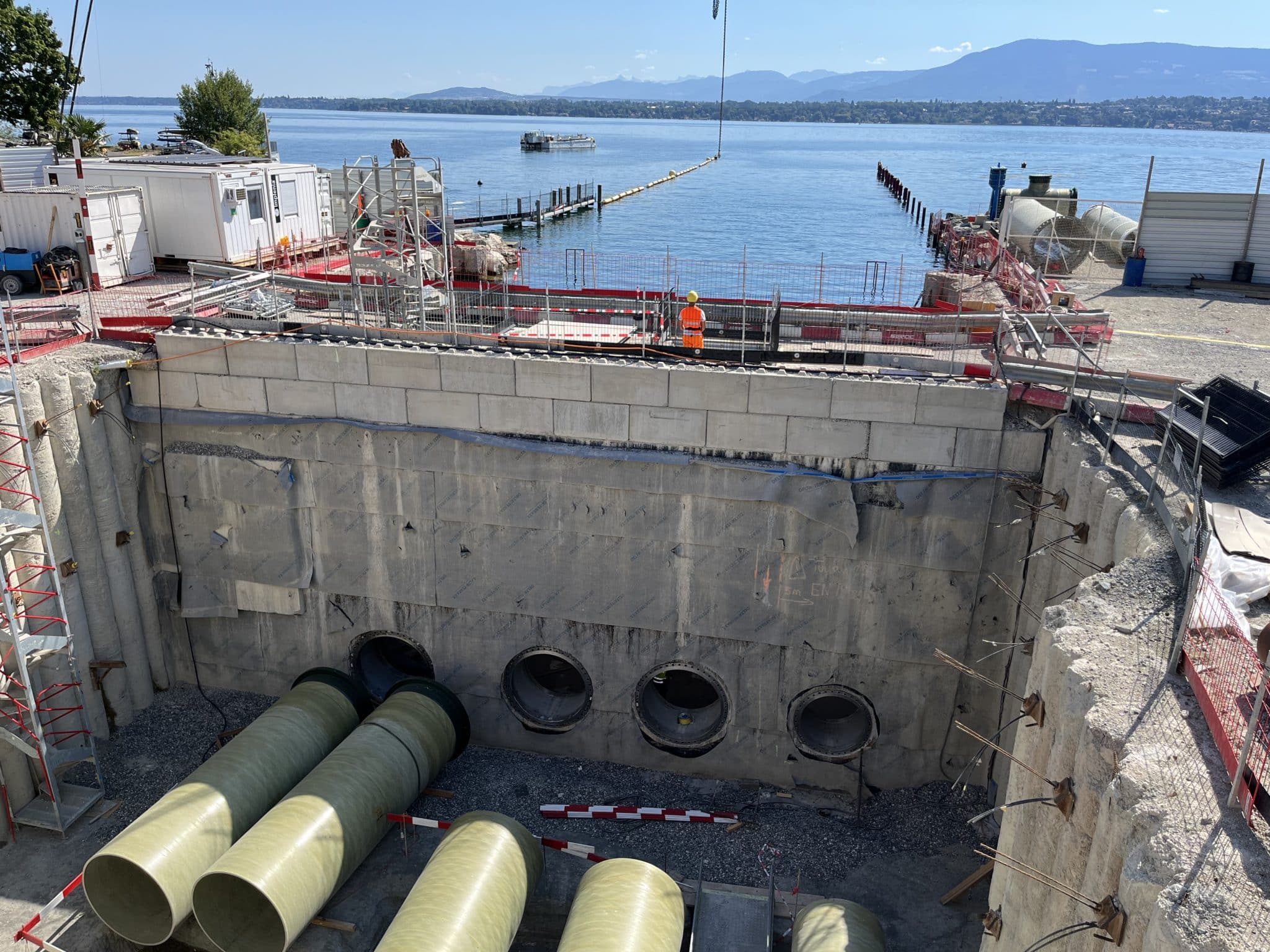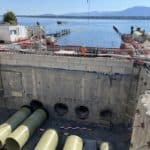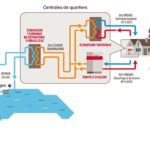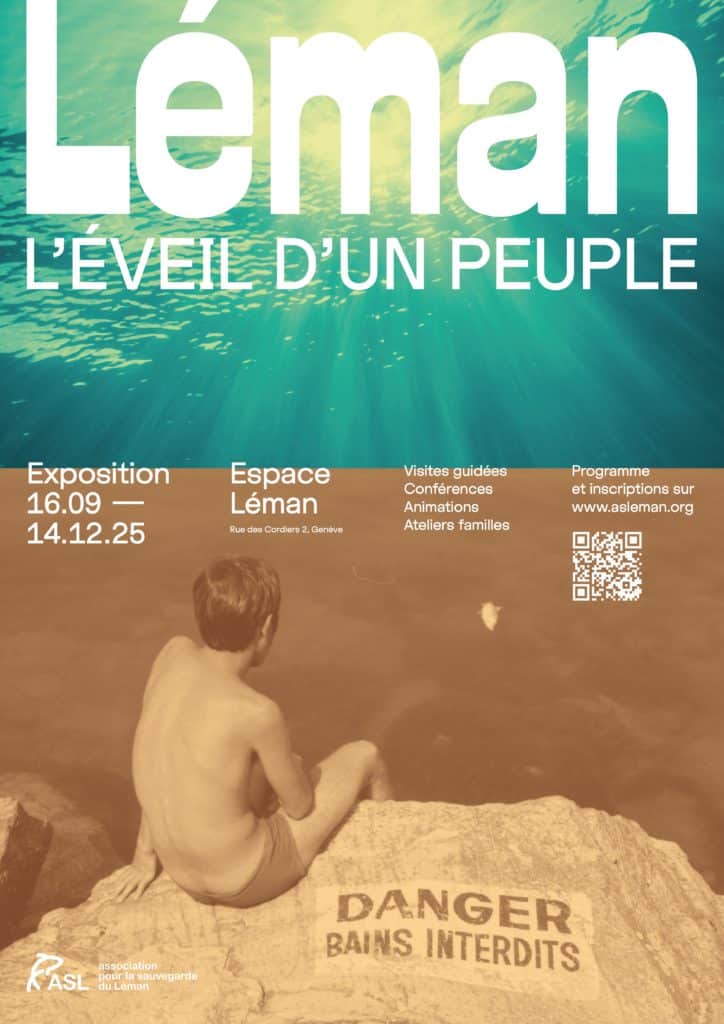On 18 February 2025, the City of Geneva announced that nearly 60 buildings would be connected to the CADéco Jonction network, in addition to those already connected to other hydrothermal networks such as Génilac, EnerLac and the EPFL. These networks provide air conditioning and heating for buildings using heat pumps fed by a water source, such as Lake Geneva. After collection, the heat from the lake water is transferred to a system via an exchanger, then the water is returned to the lake at a temperature that changes according to demand. Figure 2 below illustrates the operation of a hydrothermal station, in this case the Morges hydrothermal network. On the French side, a network exists at Saint-Gingolph for the production of heat only.
These infrastructures have a twofold advantage: they avoid the use of energy-guzzling air-conditioning units and the production of heat by fossil-fuel boilers that emit greenhouse gases. But what about the impact on lake ecosystems?
According to Martin Schmid of Eawag (Swiss Federal Institute of Aquatic Science and Technology), energy networks using lake water have no negative effects on flora and fauna as long as temperature variations remain below natural annual fluctuations. Christian Brunier, former director of SIG, confirms this, pointing out that the risks mainly concern small bodies of water, not Lake Geneva. Thanks to dilution and the difference in height between pumping and discharge, the thermal difference remains very limited (0.1°C for a maximum authorised of 1.5°C for the "Génilac" network). However, vigilance is still required in the face of the proliferation of these infrastructures in order to prevent any possible effects on lake biodiversity.
📷 : © Periodical "Canton-Communes Vaud" n°66, MorgesAvenir.ch




